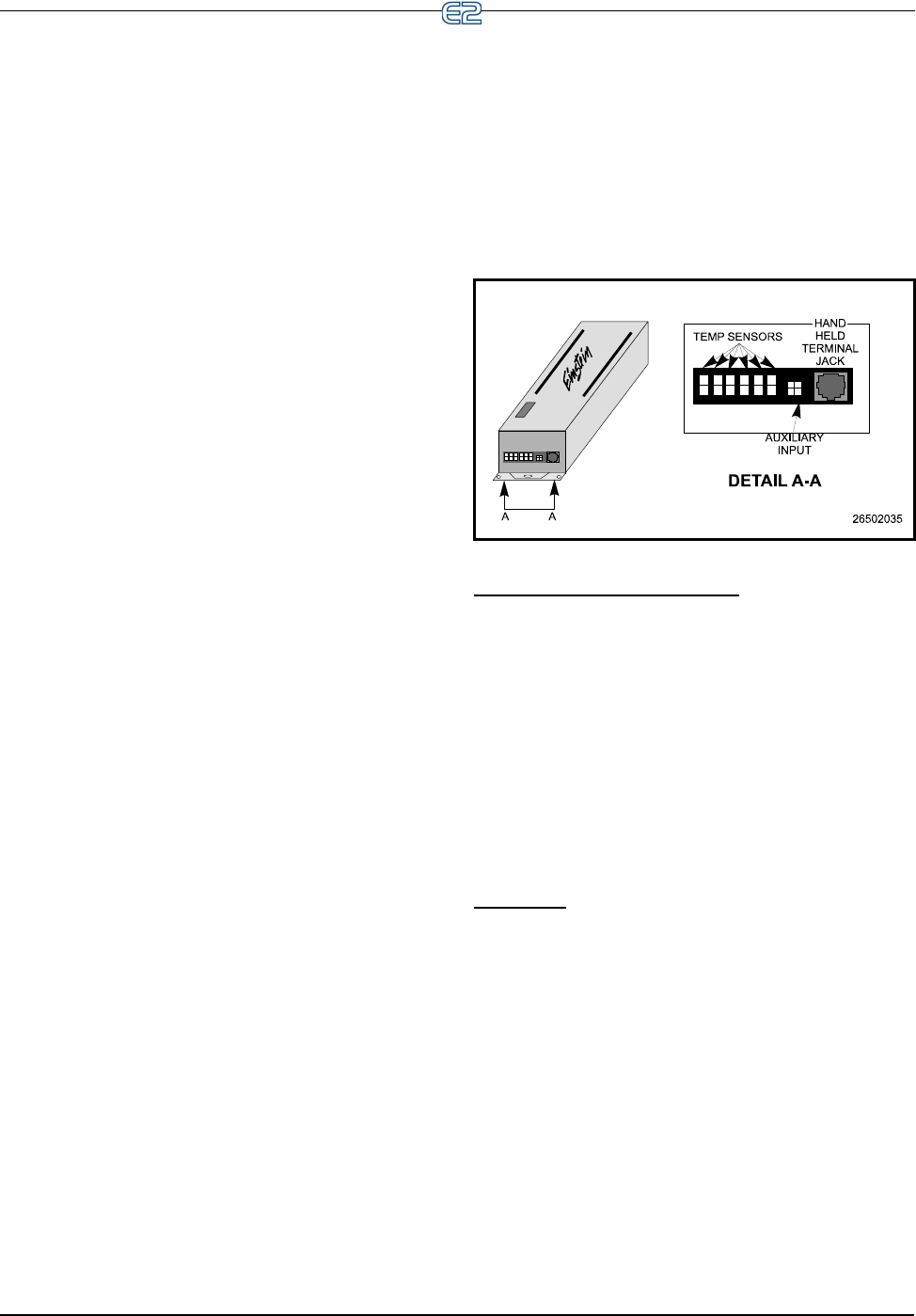
9-14 • E2 RX/BX/CX I&O Manual 026-1610 Rev 13 14-SEP-2011
able-speed device such as a compressor or fan.
If the output will be driving a variable-speed device,
choose VSComp in this field; otherwise, select Lin-
ear. Use (LOOK UP) to select.
Select Eng. Units The engineering units of the
output value are entered in the Select Eng. Units
field. This value is defaulted to percent (PCT). Use
(LOOK UP) to select.
Default Value The value that the relay output
should go to if the output is not associated to an
application. The default value of the Default Value
field is OFF.
Modify Output Equation Enables the value to be
translated into an output.
Low End Point The output voltage when the
INPUT is at the value specified in the Low Eng.
Units field.
High End Point The output voltage when the
INPUT is at the value specified in the High Eng.
Units field.
Low Eng. Units The value of the input (in Engi-
neering Units) that will produce the output voltage
specified in the Low End Point field.
High Eng. Units The value of the input (in Engi-
neering Units) that will produce the output voltage
specified in the High End Point field.
PRIORITY OVR When an input is overridden to an
output cell. If this input is not set to NONE, it will be
used for the output value instead of the input value,
but only for the override timeout period.
Priority Override Timeout When an input goes
on it will override to a value for the timeout period.
INPUT This field links the output to an application.
You do not need to enter anything in this field. You
will be able to link applications to this point during
the application setup process.
9.3 CC-100 Case Control-
lers
9.3.1 Inputs
The input connections to the CC-100 are made on the
left-hand side of the controller. Figure 9-13 shows the
CC-100 input connections.
Temperature
and Digital Sensors
The six two-pin Molex connectors on the left-hand
side of the unit (numbered 1 through 6) are where the
case’s temperature probes, coil inlet/coil outlet sensors,
and other digital switches and contacts are connected.
CPC temperature sensor leads are equipped with male
connectors that plug in to these receptacles.
For digital switches and sensors such as dual-temp and
clean switches, CPC supplies a digital output harness (P/N
335-3264) that consists of a connector with a two-wire
pigtail. These wires may be spliced on to the switch or dig-
ital sensor leads. The connector is designed to snap in to
one of the six inputs.
Connection
In order to function correctly, the CC-100 needs to
know the function of each of the sensors plugged into
inputs 1 through 6. For example, a CC-100P liquid pulse
controller needs to know which of the six sensors is the
coil in sensor, which is the coil out sensor, etc.
Each of the six inputs have a default input type assign-
ment based on the type of CC-100 (either Liquid, or Suc-
tion). If the sensors in your case match the default sensor
types, plug each sensor into the appropriate receptacle.
Figure 9-13
- Temperature, Auxiliary and HHT Inputs


















